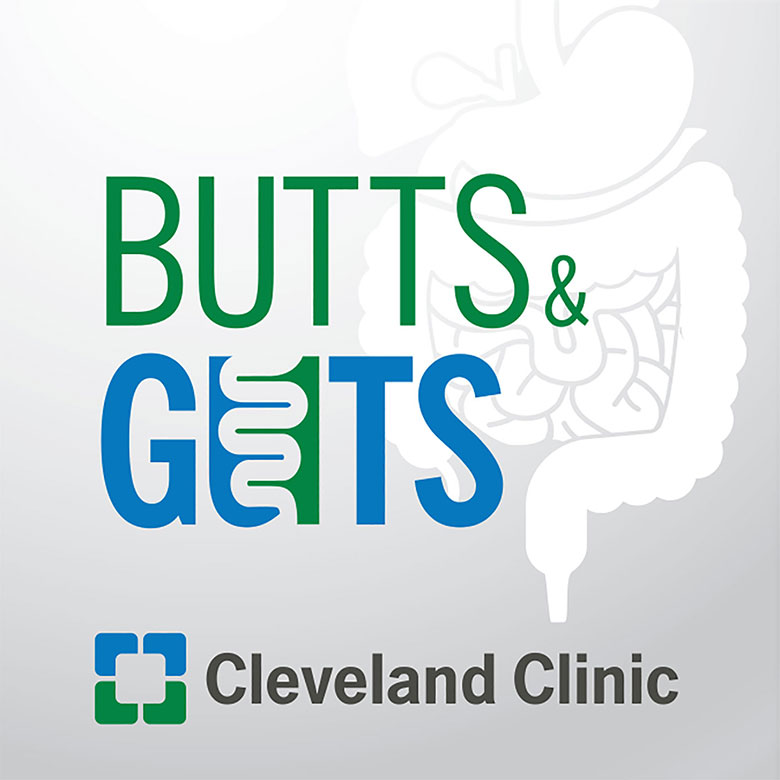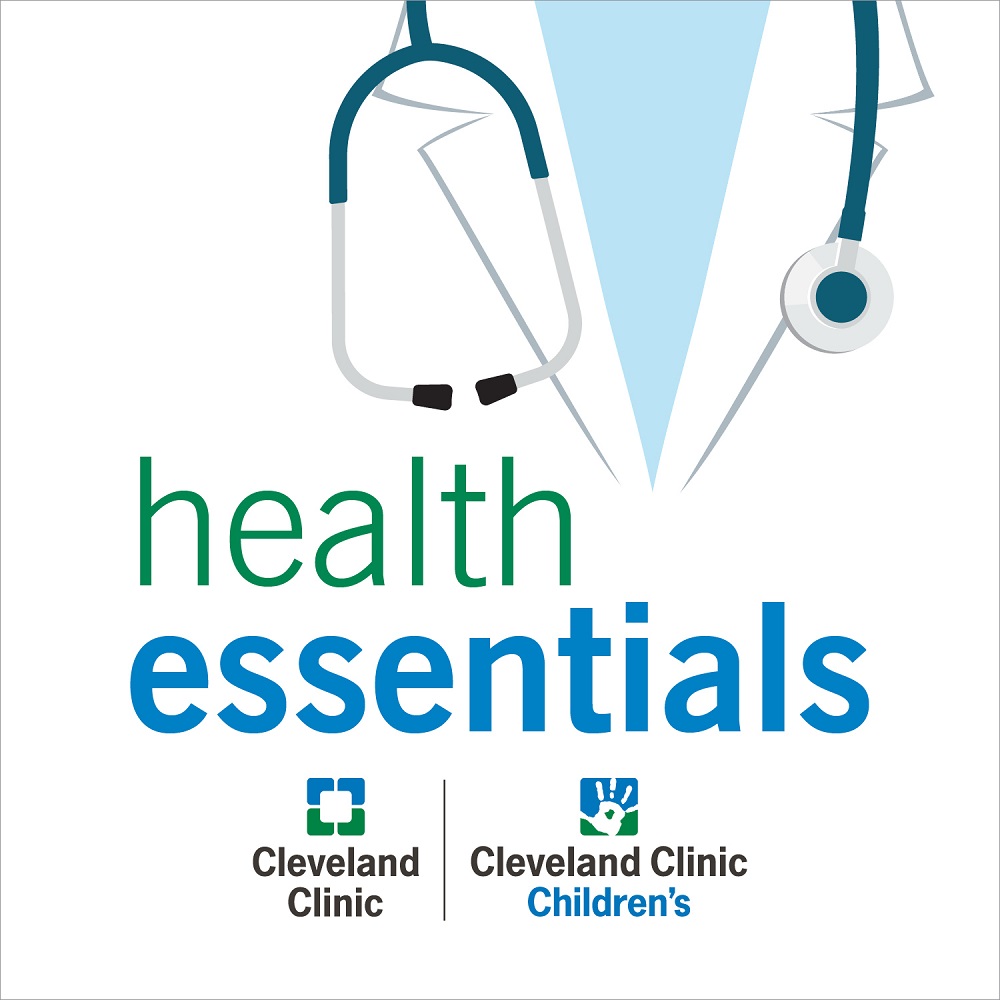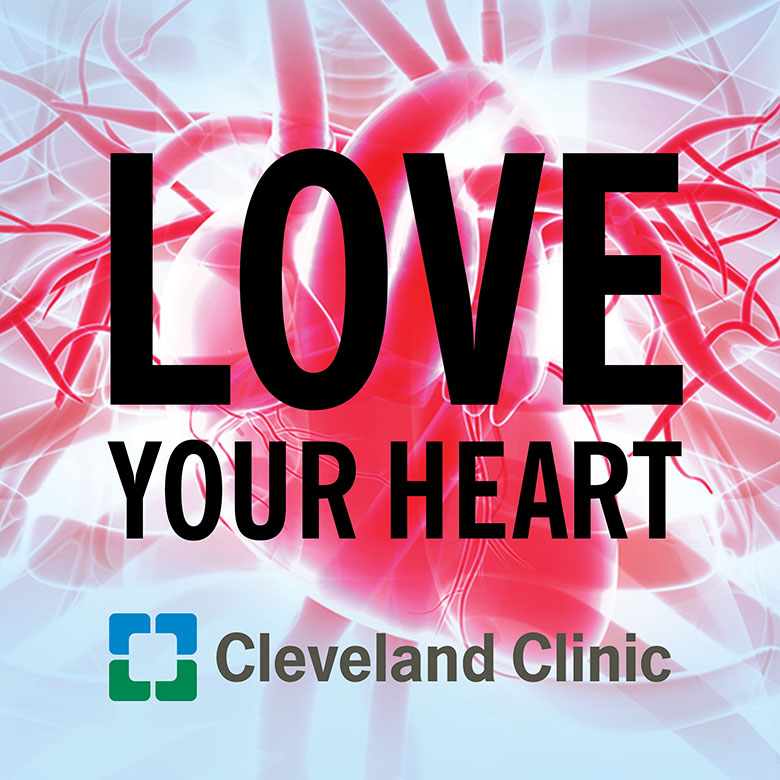Talking Tall Rounds®: 2000 Lung Transplants at the Cleveland Clinic
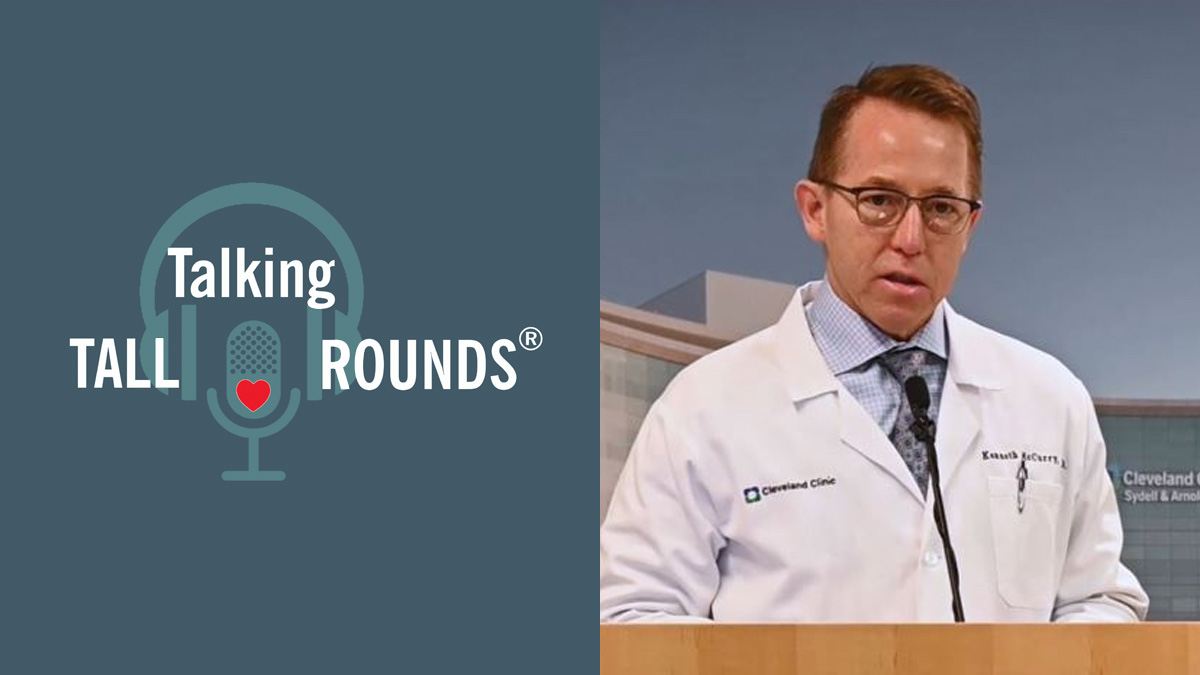
Dr. Kenneth McCurry provides an overview of the lung tranplant program at Cleveland Clinic.
Enjoy the full Tall Rounds® and earn free CME
- Introduction by Moderators: Lars Svensson, MD, PhD and Kenneth McCurry, MD
- Case Presentation: Patient #2000: Andrew Feczko, MD
- Early Difficulties Developing Lung Transplantation: Olufemi Akindipe, MD
- Evolution of Lung Transplantation at Cleveland Clinic: Atul Mehta, MD
- Pulmonary Diseases Requiring Lung Transplantation: Jason Turowski, MD
- Multi-Organ Transplants: C. Randall Lane, MD
- Innovation
- Bronchial Arterial Revascularization: Shinya Unai, MD
- Lung Transplantation in Patients with GI Disease: Usman Ahmad, MD
- Increasing the Number of Lungs for Transplantation - Ex Vivo Lung Perfusion: Kenneth McCurry, MD
- Contemporary Outcomes and Continued Challenges: Marie Budev, DO, MPH
Subscribe: Apple Podcasts | Podcast Addict | Buzzsprout | Spotify
Talking Tall Rounds®: 2000 Lung Transplants at the Cleveland Clinic
Podcast Transcript
Announcer:
Welcome to the Talking Tall Rounds Series, brought to you by the Sydell and Arnold Miller Family Heart, Vascular and Thoracic Institute at Cleveland Clinic.
Lars Svensson, MD, PhD:
Good morning. And it's my pleasure to welcome you to this Tall Rounds that's about lung transplantation and it's also about celebrating our team doing 2,000 lung transplants, which is an amazing achievement. And based on the numbers we in total, we are the biggest lung transplant team in probably the country and the world. That's something that can be confirmed later by Ken. And I suspect with COVID, as much as we struggle with that and wear our masks and everybody's socially distanced in here, we are probably going to see more chronic patients now from COVID also that we're going to have to deal with. And as many of you know, we've already done lung transplants for COVID.
Lars Svensson, MD, PhD:
This is a great program that everybody's put together. Not only over time, Atul Mehta and Marie Budev have been very strong partners in the Respiratory Institute with the rest of their team and Herb Wiedemann also and Raed Dweik and then our surgeons and Ken really made this program grow. And so this is a great program reviewing the current state of the art in lung transplantation and we're very proud of what the team's achieved. With that, I'm going to hand over to Ken.
Kenneth McCurry, MD:
Thank you very much, Lars. We greatly appreciate the opportunity to present today. Just want to reiterate a couple of things. I think this program is an outstanding program that's been built on the shoulders of many, many people over the years. We have some outstanding members of our team here this morning to update you on what our program has been doing and what the state of the art for lung transplantation is now in the world. But there are many, many members of the team who are not here today, including our anesthesia colleagues, our respiratory therapists, our nutritionists, our nursing staff and a variety of people and they're all very integral to our outcomes and to the patients that we offer this lifesaving therapy to.
Olufemi Akindipe, MD:
Thank you for the privilege. I'll be talking about the early difficulties in lung transplantation. Lung transplantation as we know it now was really founded on the shoulders of a lot of basic science and experimental surgery. One of the early colorful pioneers was Vladimir Demikhov, he was a Russian scientist who attempted single lung transplantation in dogs in 1946. His transplants ultimately failed from bronchial anastomotic dehiscence. And this is important because difficulties with the anastomosis would plague clinical lung transplantation for the next 40 years.
Olufemi Akindipe, MD:
James Hardy was an American surgeon who is credited with doing the first human lung transplant in June 1963 at the University of Mississippi. The patient died from kidney failure and malnutrition after 18 days. The immunosuppression by today's standards would be considered primitive. Patient got azathioprine, cortisone and five days of cobalt irradiation. Even though James Hardy is noted to be the founder of lung transplantation, he was roundly criticized because his recipient was a prisoner, had central lung cancer and had lymph node metastasis.
Olufemi Akindipe, MD:
Over the next 10 years, there were about 34 attempts at lung transplant around the world. Only one of them, a young man with silicosis who underwent right lung transplant in Belgium in 1968, survived long enough to leave the hospital. He lived 10 months. Most deaths were attributed to respiratory failure. Back then, it was quite difficult to distinguish between pulmonary infection and rejection.
Olufemi Akindipe, MD:
If you were to summarize the failure of the early experience, it was mostly inadequate immunosuppression, as well as difficulties with the bronchial anastomosis. However, concurrent developments that were going on at the time in medicine really helps to usher the field forward. And these were things like improvements in ventilatory support and hemodynamic monitoring that made it easier for us to take care of patients in the ICU. Things like imaging of the chest, including CT, and probably more importantly development of fiber optic bronchoscopy, which enhanced our ability to inspect the airways and conduct transplant care biopsies for pulmonary pathology, including post-transplant rejection.
Olufemi Akindipe, MD:
1981, 1982 ushered in a major development. Bruce Reitz in Stanford performed as a series of successful heart lung transplants in patients with pulmonary arterial hypertension and right heart failure. The group at Stanford had a lot going for them. They already had significant heart transplant experience. This was Norman Shumway's group and they'd been doing heart transplants since 1968. Also technically the way this surgery was done was a tracheal anastomosis with much better collateral blood supply from the coronaries so you did not see the ischemic airway problems that you saw with isolated lung transplants. They also took advantage of the introduction of cyclosporine has an immunosuppressant.
Olufemi Akindipe, MD:
Cyclosporine, which was called cyclosporine A, underwent lab evaluation during the 1970s and supplanted high dose corticosteroids in the 1980s. Because of that, surgically there was improved healing and wound strength. The mechanism, as we all recall, is an inhibition of an IL-2 driven lymphocyte proliferation. And cyclosporine as a drug really did revolutionize organ transplantation as a field.
Olufemi Akindipe, MD:
After the success of these heart lung transplants, the success on replication of heart lung transplantation in other big centers like Pittsburgh and Papworth, led to this being offered not only in patients with pulmonary hypertension, but in patients with emphysema, ILD and cystic fibrosis, where the cardiac portion of the transplant was physiologically unnecessary. And that led to things like domino heart transplant procedures, where a patient with cystic fibrosis for instance, would get a heart lung transplant and that patient's heart is offered to a patient who needs a cardiac allograph so there's no net loss of organs.
Olufemi Akindipe, MD:
In the early 1980s, around 1986, Joel Cooper in Toronto published the first successful single lung transplant for a patient with pulmonary fibrosis. This recipient was discharged six weeks later, returned to an active lifestyle and survived for six and a half years. Ultimately dying from complications of renal failure.
Olufemi Akindipe, MD:
For patients who needed both lungs replaced, patients who had bronchiectasis cystic fibrosis, the initial approach, which was described by Alec Patterson, who was a colleague of Joel Cooper, was a modification of the heart lung procedure. This was an unblock double lung transplant with a tracheal anastomosis. Unlike the combined heart lung procedure, this was often associated with a significant incidence of fatal airway complications. Notwithstanding the use of an omentopexy, around the tracheal anastomosis.
Olufemi Akindipe, MD:
However, growing experience and improving survival with the single lung transplant procedure soon made it apparent that the way to do bilateral lung transplantation was simply and safely by just replacing the lungs using the single lung transplant technique. You are basically doing two single lung transplants. The bilateral sequential single lung transplant technique, which with much shorter segment of ischemic donor airway could be done without cardiopulmonary bypass, until today remains the standard technique for this procedure. Thank you.
Kenneth McCurry, MD:
Thank you. I'll briefly discuss sort of another innovative aspect of our program in terms of trying to increase the number of lungs that we have available for patients. Just as a disclosure, I'm a consultant to Lung Bioengineering, which I'll mention in approach here.
Kenneth McCurry, MD:
As Femi outlined, this has sort of been a long and arduous course getting to where we could actually clinically do lung transplantation. And one of the things that's made it a feasible is cold flush out and cold storage of lungs. We go to a donor hospital, we flush the lungs with a cold solution, we take them out, we put them on ice, we store them in a cooler and we bring them back here to be transplanted. And this is how essentially all lung transplant programs do it. Cold is protective. By making it cold, we reduce the metabolism of the lung and hopefully prevent injury. However, it also hinders active metabolic processes and the opportunity to repair or make alterations in the organ that may prove beneficial.
Kenneth McCurry, MD:
And this is sort of how things have evolved over the years. Donors are managed at a particular hospital. Someone decides to accept or decline those organs. They go, they procure the organs. Again, they flush it as I described, put it in a cooler on ice and transplant those organs. As a result of this approach, in the United States, we utilize only 20% of lungs from all the donors that are available. And part of it is logistical issues that might make it difficult to properly evaluate the organ or organs. There may be issues of ischemic time or oedematis lungs or infection, maybe the lungs aren't working well, but maybe there was something that we could do to make them Better. But 80% of lungs currently go unutilized. And this is a problem because our supply just does not equal our demand.
Kenneth McCurry, MD:
Every year in the United States, we perform about 25, now about 25 to 2,700 lung transplants. For every three to four patients that we transplant, there's one patient that dies on the waiting list. Additionally, over the last 30 years in the United States, about four and a half million people have died of chronic lung diseases. Many of those people are not evaluated for lung transplantation, never listed. And we and many other people around the world think that there's an opportunity to be able to utilize more lungs, to offer lung transplantation to more patients and prevent them from dying of chronic respiratory failure.
Kenneth McCurry, MD:
And this is the approach that we've used and certainly others have used as well. University of Toronto group has provided leadership in this to the world, but a number of other people around the world have been engaged in this. And basically the idea is to take lungs that otherwise would not be used and to put them on a machine, go get them, bring them back. As I described before, put them on a machine that allows us to evaluate those organs or potentially to treat them, to try to make them better. And that's called ex vivo lung perfusion.
Kenneth McCurry, MD:
What is that? This is basically a schematic of the machine you see on the right. The lungs are hooked up to this circuit, which has a pump, has a reservoir, has an oxygenator, leucocyte filter and a heater, a heat exchanger that allows us to warm and cool the circuit and the lungs are perfused with this solution, a special solution that has a very high oncotic pressure. It has the ability to potentially draw a water out of the lungs and allows us to see the lungs. We can do bronchoscopy. We can do a variety of things to try to treat lungs to them better, to evaluate them and as I'll mention at the end of the talk briefly, perhaps to do things to personalize those lungs, that would result in improved outcome for that particular individual in which those lungs are transplanted.
Kenneth McCurry, MD:
And historically, this is what we've done at the Clinic. We began this work in our laboratory back in 2000. We had homemade circuits at the time. We're taking discarded lungs from our local and surrounding organ procurement organizations and tried to gain experience and do experimental work to see what we could do to improve these lungs. In addition, we've had various research protocols and funding looking at this in porcine lungs as well. We began clinically in 2016, meaning using lungs for transplantation with this technique and initially engaged with a company whose idea is to have a center where this is done. Lungs are shipped there, EVLP is performed, then they're shipped back. And this is still in the experimental stage. And we're involved in their pivotal trial that's ongoing right now as well. And then began doing it in house clinically at the beginning of 2018, end of 2017, with our own machine that had been approved by the FDA in the year or two prior to that.
Kenneth McCurry, MD:
And you can see here, I'll draw your attention to the first yellow line on the left. You can see our increasing experience since 2016 in terms of number of lungs that had been transplanted off of an EVLP circuit. These are lungs that otherwise we would not have been able to utilize. And you can see how EVLP is impacting our program. In the far right column, where last year in 2019 fully almost 20% of our lung transplants were performed off of the EVLP. This is 20% of our volume, 20% of patients that we would not have been able to help without this technology.
Kenneth McCurry, MD:
This year, it's actually been extremely helpful because in the arena of COVID, there's been lots of difficulty traveling. We've had other local procurement surgeons, sometimes procure organs for us, not knowing where those lungs would be good or not. We've been using EVLP as a way to assess those organs since we didn't see them prior to them arriving here, to be sure that they were going to work well for our patients. 25% of our volume this year has been with EVLP. And this is our results very quickly. Our 30 day survival has been quite good, a 100%. Our one year survival has been outstanding with transplants that have been performed off of EVLP.
Kenneth McCurry, MD:
And real quickly, so there's still a lot of unknowns with this technique. A lot of unknowns about decision making, which lungs need to go on EVLP, which don't. How to assess lungs on EVLP. And then there's the whole arena of potentially treating them to make them better. We've been actively engaged in these innovative and research areas. And just to highlight a few things that our team has done. This was looking at obese donors with poor lung function that historically have been declined. And we demonstrated that many of those organs can be utilized either directly to transplantation or potentially with EVLP. And this was published a few years ago. We've examined a variety of biochemical markers while the lungs are on EVLP that help decision making in terms of determining whether those lungs are actually good for transplant or not.
Kenneth McCurry, MD:
And we've developed an innovative way of evaluating the lungs on EVLP and this is essentially using ultrasound directly on the lungs. And we termed this CLUE, this technique and now we've got two publications in the Journal of Heart Lung Transplantation. And this is a very good technique that allows us to assess extravascular lung water and has a very good correlation with how the lungs perform after lung transplantation. And we have a patent pending with this particular technology.
Kenneth McCurry, MD:
We've developed other strategies as well. We came up with the idea, translated this from our MICU, from years ago, in terms of proning patients who have significant lung dysfunction. We started proning lungs on EVLP and that's resulted in significant improvement in some lungs by getting rid of extravascular lung water and being able to recruit those lungs and have them perform better.
Kenneth McCurry, MD:
And there's a myriad of potential options here to improve these organs. And these are some things highlighted here that a number of programs around the country are engaged in, gene therapy, looking at inhibitory mRNA. Dr. Elgharably at our program is working on his PhD, looking at inhibitory mRNA. And that might be something that could potentially be translated at some point into a gene therapy approach. Inhaled gases, utilizing antibiotics to treat lungs that are infected while they're on EVLP, using viricidal agents to treat lungs from hepatitis C donors and a variety of other things like that.
Kenneth McCurry, MD:
Again, lots of options here to increase the number of lung transplantation, being able to offer this to more patients and potentially being able to personalize it to decrease rejection, improve longterm outcomes. And these are the people that have been leading this effort. Dr. Okamoto is the leader of our EVLP program. And Dr. Ayyat, is the assistant leader. Ichiro Sakanoue is still here and then Hiro and Daisukai on the right were part of our program when it began has subsequently left and gone back to Japan. Our respiratory therapists, our perfusionists a variety of people participate in this.
Kenneth McCurry, MD:
One of the big hurdles to utilizing lungs in the United States is OPOs or organ procurement organizations actually offering those lungs. And there are lots of logistical or at least lungs that are not working well. And there are lots of logistical and even financial hurdles in that regard. About a year ago, we started this and we brought a lot of leaders from around the country from various OPOs and clinical lung transplant programs together here at the Clinic to begin a discussion about how we could take those lungs that are not being utilized because they're not good right now and be sure that nearly all of those lungs go on an EVLP circuit to see if they're usable. And this is something that we plan to continue on an annual basis beginning again next year. So, thank you.
Announcer:
You for listening. We hope you enjoyed the podcast. Like what you heard? Visit Tall Rounds online clevelandclinic.org/tallrounds and subscribe for free access to more education on the go.
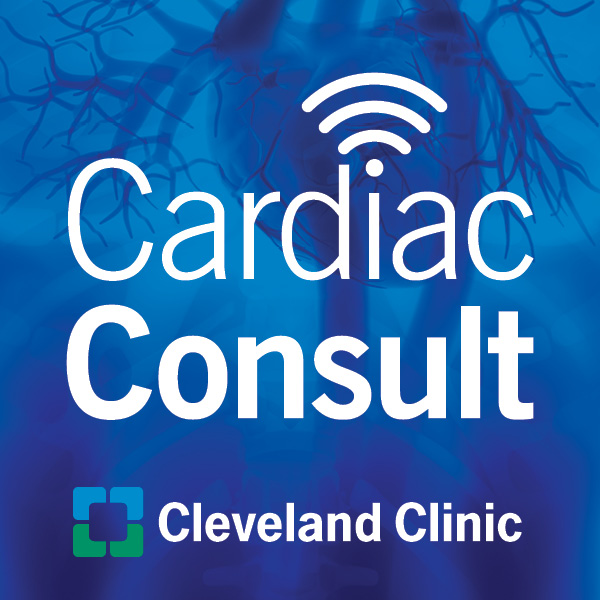
Cardiac Consult
A Cleveland Clinic podcast exploring heart, vascular and thoracic topics of interest to healthcare providers: medical and surgical treatments, diagnostic testing, medical conditions, and research, technology and practice issues.
